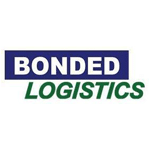KPI Dashboard: 16 Tested Metrics
A warehouse KPI dashboard is an essential tool for any business that wants to improve its warehouse operations. By tracking key performance indicators (KPIs), you can identify areas where your warehouse could be performing better and make changes that will improve efficiency and productivity.
In this article, we will discuss the benefits of using a warehouse KPI dashboard, also called a WMS KPI dashboard, and some best practices for setting it up. We’ll also list the top 16 KPIs that are most often used in a warehouse.
What are Key Performance Indicators (KPIs)?
KPIs are metrics that help you track and measure progress towards specific goals. In the context of warehouse operations, KPIs can help you track things like inventory levels, order fulfillment rates, and shipping times.
By tracking KPIs, you can identify areas where your warehouse could be performing better and make changes that will improve efficiency and productivity.
What is a WMS KPI Dashboard?
A warehouse KPI dashboard, also known as a warehouse management system or WMS KPI dashboard, is a tool that allows you to track and measure important KPIs.
Dashboards typically display data in the form of charts and graphs, making it easy to see trends and identify areas for improvement.
For example, the WMS dashboard in Cadence WMS gives you real-time insight into warehouse occupancy, current activity, shipment analyses, and door usage.
A variety of graphical views allow you to examine cost, profitability, activity levels, KPIs, and inventory trends over specific dates.
Benefits of Using a WMS KPI Dashboard
- Save time: There are many different KPIs that you could track, but not all of them will be relevant to your business. By using a dashboard, you can quickly see which KPIs are most important for your operation and focus your attention on those.
- Improved communication: When you have all of your KPIs in one place, it is easier to share them with other members of your team. This way, everyone can be on the same page and working towards the same goals.
- Make better decisions: By seeing all of your KPIs in one place, you can more easily identify trends and patterns. This information can be used to make changes in your operation that will improve your overall performance.
How To Set Up a Warehouse KPI Dashboard and Best Practices
When setting up a KPI dashboard, there are a few best practices to keep in mind.
- First, you should only track KPIs that are relevant to your business. There is no point in tracking KPIs that you will never use.
- Second, you should make sure that your dashboard is easy to understand. All of your team members should be able to quickly interpret the data on the dashboard.
- Finally, you should update your dashboard regularly so that it always reflects the most current data.
By following some best practices, you can ensure that your dashboard is effective and useful.
Setting KPI Targets
KPI targets should be set according to the specific goals of your business. These targets will vary depending on the size and type of operation.
For example, if you are a small business, you might want to set a target for reducing picking time by X percent.
If you are a larger business, you might want to set a target for reducing out-of-stocks by X percent.
Whatever targets you set, make sure that they are realistic and achievable.
Methods for Setting KPI Targets
There are a few different ways to set KPI targets.
- One way is to look at industry benchmarks. This can give you an idea of what other businesses are doing and how well they are performing.
- Another way to set KPI targets is to use historical data. This can help you see how your business has performed in the past and identify trends.
- Finally, you can use guess and check. This involves making an educated guess about what you think would be a good target and then testing it out.
Once you have set your KPI targets, it is important to track your progress and adjust your targets as needed. By regularly reviewing your KPIs, you can ensure that you are on track to reach your goals.
Tracking KPIs: Spreadsheets or Software?
There are a few different ways to track warehouse KPI metrics. One way is to use a spreadsheet. This can be a helpful way to organize your data and spot trends.
Another way is to use warehouse management software. Warehouse management systems like the ones offered by Cadre have many built-in features which save time and make it easy to see important data.
Some suggest using a combination of both methods, so you have the flexibility to print out and post metrics for your workforce. However, a good WMS will enable you to create reports and generate graphs that you can easily print and share with your workforce.
The bottom line is that it is important to track KPIs in the way that works best for your business.
Track Your KPIs Regularly
No matter how you choose to track your KPIs, the important thing is to do it regularly. You should aim to review your KPIs at least once a month.
This will help you spot problems early and make adjustments to your operation as needed.
Why Tracking Warehouse KPIs is Important
A WMS KPI dashboard can help you measure and track progress in each important metric. By having all the data in one place, you can quickly identify problem areas and take corrective action.
Examples of Warehouse Performance Goals That Can Be Tracked by KPIs
There are many different KPIs that can be tracked in a warehouse. Some examples include:
- Inventory levels
- Order fulfillment rates
- Shipping times
- Number of orders processed per day
- Number of items shipped per day
By tracking these KPIs, you can identify areas that need improvement and make changes to improve your overall performance.
Warehouse KPIs to Track in Your Dashboard
As we said, it’s important to track KPIs that are actually important to your business. With that in mind, we developed Cadre’s WMS dashboards to track these KPIs:
Receiving Cycle Time
This KPI measures the time it takes for your warehouse to receive and unpack merchandise. A high receiving cycle time can indicate inefficiencies in your receiving process.
Receiving Rates by Employee
This KPI tracks the number of receiving errors made by each employee. This data can help you identify problem employees and improve your training process.
Put Away Cycle Time
This KPI measures the time it takes for your warehouse to put away merchandise after it has been received. A high put-away cycle time can indicate inefficiencies in your storage process.
Order Picking Accuracy
This KPI tracks the accuracy of your order pickers. A high accuracy rate indicates that your pickers are efficient and effective.
Picking Cycle Time
This KPI measures the time it takes for your warehouse to pick and pack orders. A high picking cycle time can indicate inefficiencies in your picking process.
Picking Rates by Employee (pick by user, by hour, etc.)
This KPI tracks the number of picks per employee. This data can be broken down by the user, by the hour, and more to identify inefficiencies and improve your training process. It’s also important to look at other factors, such as if an employee is picking by zone or from all areas of the warehouse.
Inventory Accuracy
This KPI tracks the accuracy of your inventory. A high inventory accuracy rate indicates that your inventory is well-managed.
Inventory Turnover Rate
This KPI measures how often your inventory is sold. A high turnover rate indicates that your inventory is moving quickly.
Inventory Shrinkage
This KPI measures the amount of inventory that is lost or stolen. A high shrinkage rate indicates a problem with your security or inventory management.
Fulfillment Accuracy Rate
This KPI tracks the accuracy of your order fulfillment. A high fulfillment accuracy rate indicates that your orders are being fulfilled correctly.
Total Order Cycle Time
This KPI measures the time it takes for your warehouse to receive, pick, and pack an order. A high total order cycle time can indicate inefficiencies in your overall process.
Perfect Order Rate
This KPI measures the percentage of orders that are fulfilled perfectly. A high perfect order rate indicates that your warehouse is running smoothly.
Late Shipments
This KPI tracks the number of orders that are shipped late. A high number of late shipments can indicate problems with your shipping process.
Client Profitability (3PLs)
This KPI measures the profitability of your clients. This data can help you identify the most profitable clients so you can target them for future business.
Space Utilization
This KPI measures the percentage of your warehouse that is being used. A high space utilization rate indicates that your warehouse is being used efficiently.
Labor Utilization
This KPI measures the percentage of your labor that is being used. A high labor utilization rate indicates that your labor is being used efficiently.
Get a WMS to Track KPIs
A warehouse management system (WMS) is software that helps you manage many essential functions in your business.
This includes managing inventory, seeing real-time data and alerts, and tracking KPIs such as receiving cycle time, picking cycle time, and product quality.
Having a WMS dashboard that displays all of these KPIs helps you keep track of the data important to any warehouse manager.
Cadre WMS with KPI Dashboards
If you’re looking for a WMS to help you track your KPIs, consider Cadre’s Cadence WMS or LogiView. Our WMS offers warehouse KPI dashboards for businesses in the 3PL, distribution, and related sectors. Do you need help with warehouse KPIs? Contact Cadre and let one of our WMS experts assist you.









